It looks like you're using an Ad Blocker.
Please white-list or disable AboveTopSecret.com in your ad-blocking tool.
Thank you.
Some features of ATS will be disabled while you continue to use an ad-blocker.
share:
Speculating about what aliens might look like has inspired artists and film producers over the years , If aliens do exist would they look similar to
us? Unfortunately, we can’t study extra-terrestrial life to answer this question. But we can study 4.6 billion years of Earth’s history, All
existing life on earth had a single origin 3,5 Billion years ago which started to randomly diversify into more complex organisms until super
intelligent humans eventually came into being.
But what if we turn back the clock and allowed life to evolve again? Most likely we would not look the same. If you change one small thing in the early stages of evolution then the consequences will magnify through time.
In the version of history we know, The 2 eyed Haikouichthys survived and ultimately gave rise to fishes, amphibians, reptiles, mammals and ultimately ourselves.
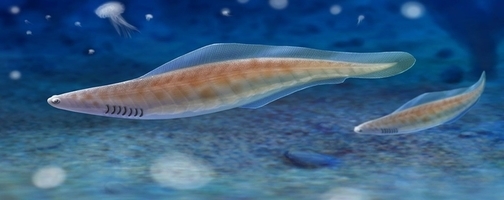
If it had perished and some other group like the 5 eyed Opabinia had given rise to intelligent beings then chances are you would probably be reading this with five eyes rather than two.
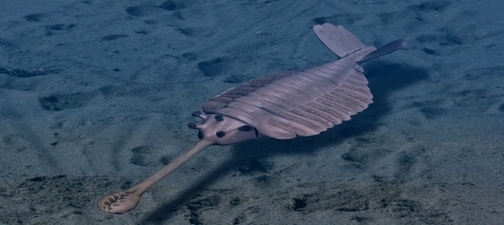
Evolution of humanoids
To understand the evolution of humanoid lifeforms we need to look at how primates evolved here on earth. All primate species possess adaptations for climbing trees. although not all species are arboreal. Some characteristics of primates are possessing large brains, claws that have been modified into flattened nails, only one young per pregnancy, stereoscopic vision, and a trend toward holding the body upright.
The first primate-like mammals evolved in the early Paleocene Epoch (65.5-55.8 mya) at the beginning of the Cenozoic Era and were roughly similar to squirrels and tree shrews. During the Eocene epoch these tree dwelling critters would later evolve into prosimians (such as lemurs and tarsiers) and during the Oligocene Epoch (40 mya) Prosimians would then evolve into monkeys.
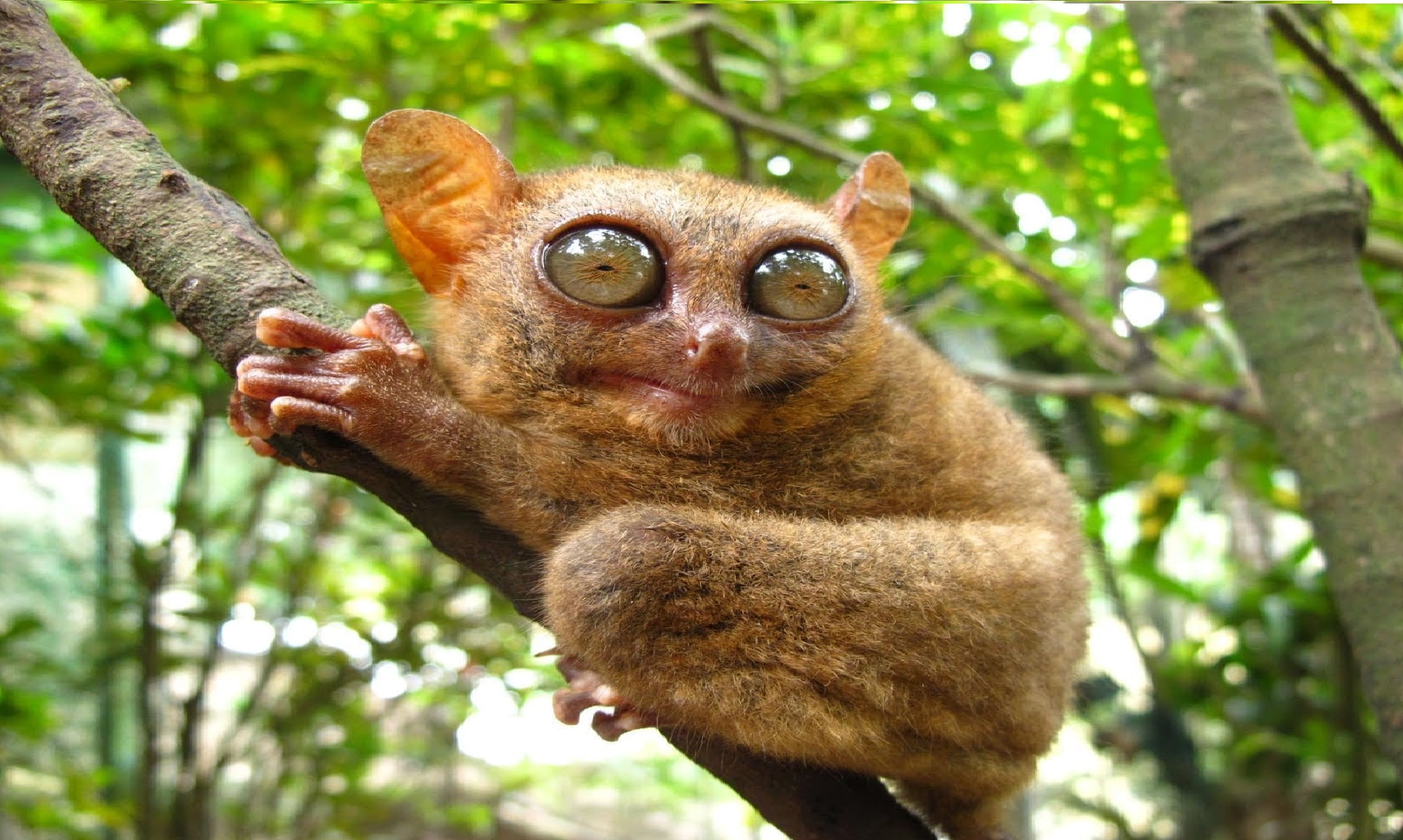
There are two types of monkeys known as “Old world monkeys” from Africa and ‘New world monkeys’ from South-America. Apes evolved from old world monkeys in Africa midway through the Cenozoic, approximately 25 million years ago , Around 7 million years ago these apes would later evolve into Hominids that had the ability to walk upright.
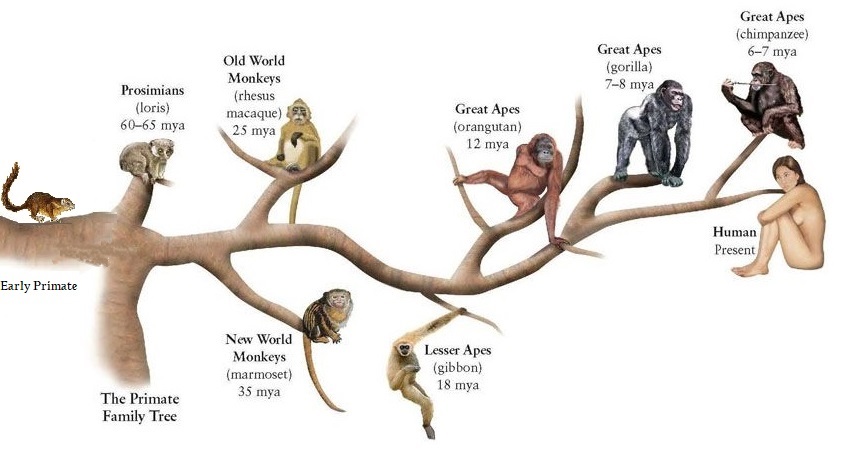
Evolutionary convergence
Sometimes evolution repeats itself with different species independently converging on similar outcomes this is known as Evolutionary convergence. examples of convergent evolution are Australia’s extinct, marsupial wolfs that have a kangaroo-like pouch , There are also marsupial moles, marsupial anteaters and marsupial flying squirrels. Other striking cases of convergence include dolphins and extinct ichthyosaurs, which evolved similar shapes to glide through the water.

Some prehistoric mammals like Chalicotherium , Anisodon and Archaeoindris have also evolved somewhat similarly to great apes with extremely long limbs yet none of them are related to anthropoid primates.
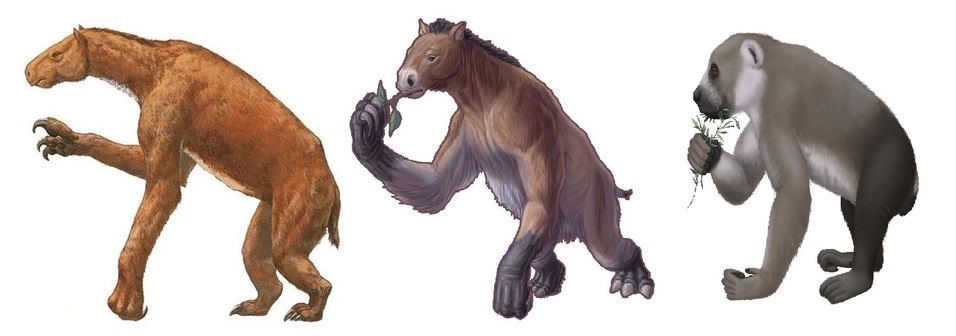
Building stone tools contributed a lot to our intelligence which required a large brain and apposable thumbs. Apes have managed to developed tool use to a great degree. This is at least partly the result of walking on two legs, which frees up the front limbs, and because of the dexterity of our fingers, If this evolutionary process worked for hominins it should work for other animals as well.

Popular Types of aliens
Humanoid Aquatic Aliens
Most people forget that marine mammals like dolphins and whales evolved from land mammals that had adapted from an aquatic environment.
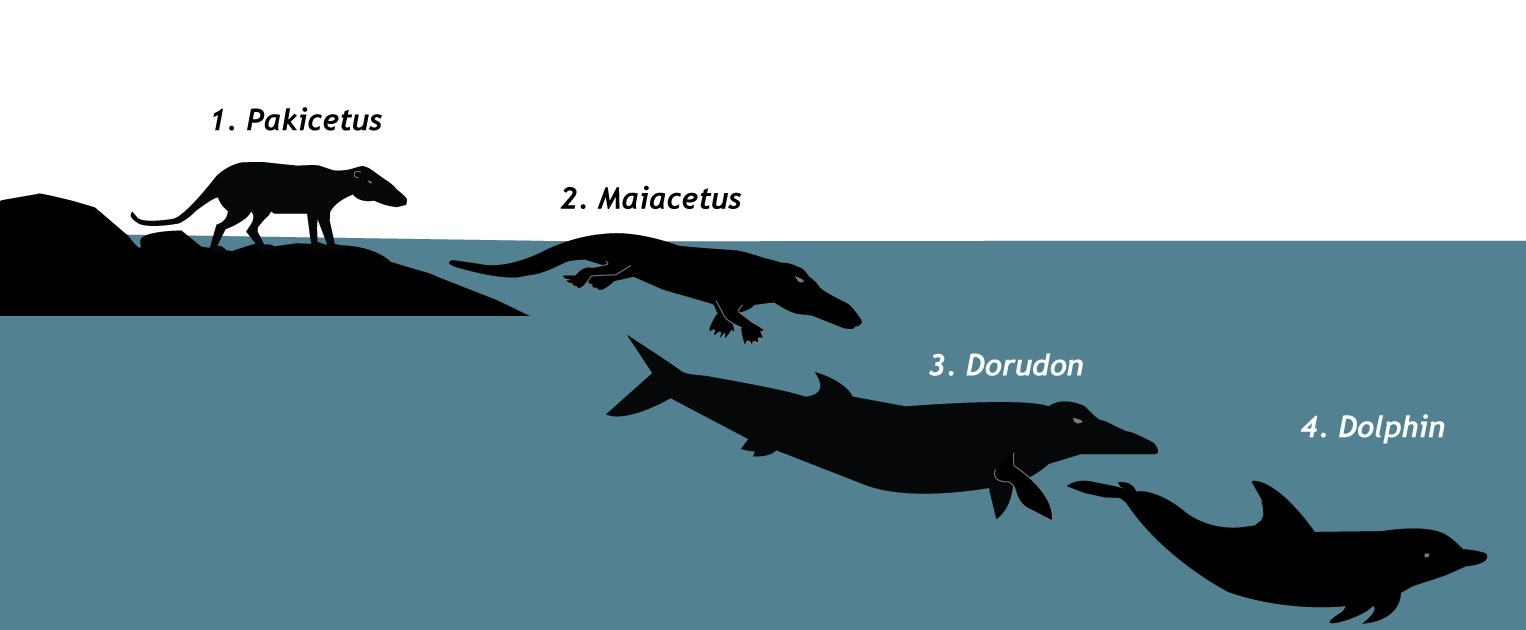
According to the “Aquatic ape theory” ancestral apes were forced by competition to leave their natural habitats and feed on the seashore searching for oysters, mussels, crabs, crayfish where they would have spent much of their time foraging under water.
There are so many hypothetical scenarios where early hominids would be required to adapt an aquatic lifestyle. But what are the anatomical changes that would follow?
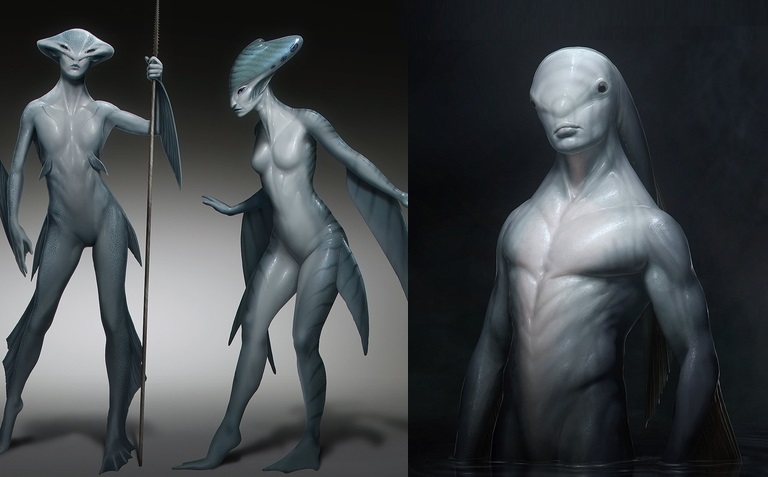
• Like most aquatic marine mammals the aquatic humanoids will develop 18-20% body fat which will mainly consist of blubber for insulation to survive in cooler waters. Unlike normal fat Blubber is much thicker and contains many more blood vessels than the fat found in land animals. Since hair would serve no purpose for thermal regulation the sweat glands would disappear , the outer layer of the skin would then become thick and smooth to allow better movement through water.
• Partial feet and hand webbing with additional fins would also help to move through water much faster.
• Through natural selection carnivorous teeth would enable the aquatic humanoids to successfully pass on their genes as a result of selection pressures for resources.
• Like all marine mammals , aquatic humanoids would develop muscular flaps around the nostrils to cover the respiratory tract ensuring water does not enter lung activity.
• Increased volume of red blood cells would store more oxygen enable long dives for prey
• The movement of the ears closer to the eyes is also part of the evolution process
Humanoid Insect aliens
What about the large brained and intelligent creatures that might be capable of crossing interstellar distances? Insects are by far the most species rich group on Earth: why shouldn’t aliens look more like them?

Unfortunately, having your skeleton on the outside makes growth difficult, and requires periodic shedding and regrowth. Since Insects have exoskeletons made out of chitin the composed material could cause the exoskeleton to become more brittle and more likely to break , insects larger than 3 feet would become extremely vulnerable and would become too slow to even move. On Earth-like planets, all but relatively small terrestrial animals with chitin based exo-skeletons would eventually collapse under their own weight during moulting.
Humanoid reptilians
There are two ways reptiles could evolve into humanoids.
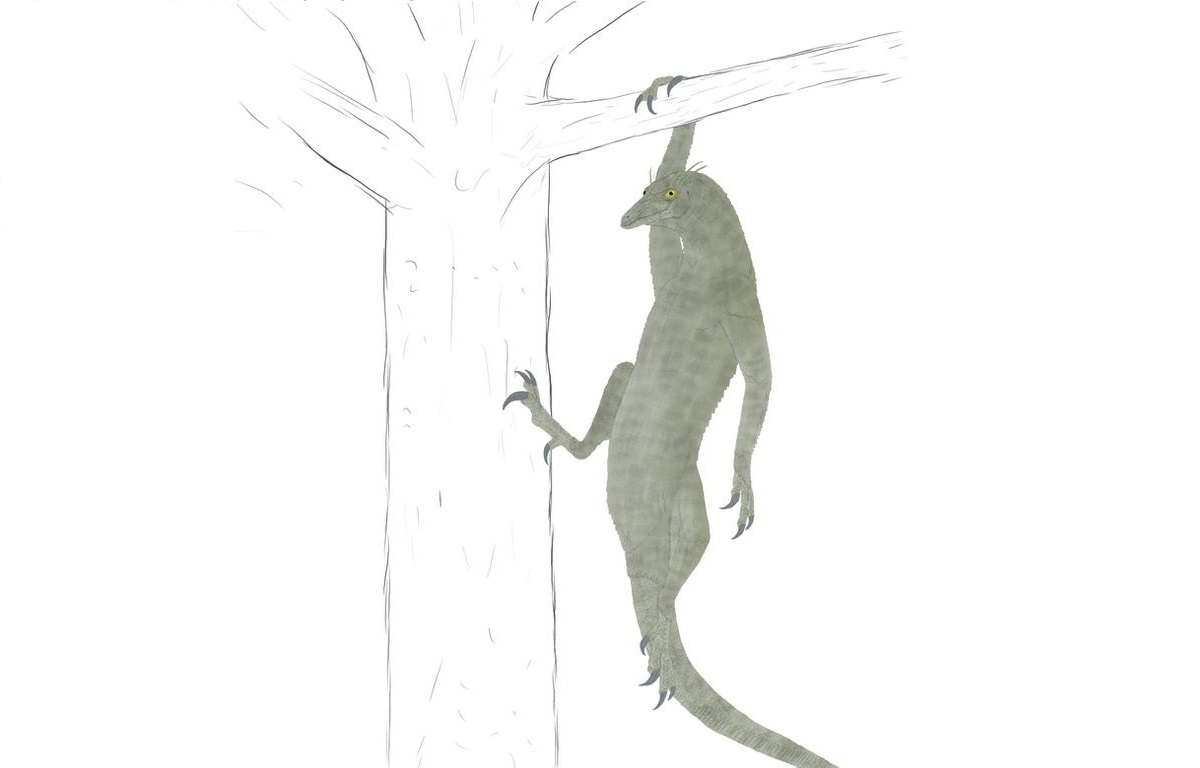
They could either start climbing/swinging on trees like primates and start developing long fore limbs and a bulky torso like apes or through the process of convergent evolution they might evolve into the shape of an ape and gradually start walking upright.

Whether reptiles unlike mammals have the brain capacity to start using stone tools is debatable. Scientists have proven that some dinosaurs like Troodon had a brain that was gradually increasing in size. But the rate at which a reptile’s brain evolves is much slower than in mammals. Some scientists like Dale Russel have speculated that If the Troodon dinosaur survived the mass extinction event 60 million years ago and was alive today it would have had the brain capacity of 1100cm which is the same size of a small human. Since there are no intelligent reptiles alive we can only speculate.
Would aliens also have lips like us?
When we compare human lips to those of our nearest relatives, there are several differences: the existence of a philtrum and the "fleshy" red lips which is covered with mucose instead of skin.

It’s still a mystery how humans still have a philtrum since it serves no purpose
But what if we turn back the clock and allowed life to evolve again? Most likely we would not look the same. If you change one small thing in the early stages of evolution then the consequences will magnify through time.
In the version of history we know, The 2 eyed Haikouichthys survived and ultimately gave rise to fishes, amphibians, reptiles, mammals and ultimately ourselves.

If it had perished and some other group like the 5 eyed Opabinia had given rise to intelligent beings then chances are you would probably be reading this with five eyes rather than two.

Evolution of humanoids
To understand the evolution of humanoid lifeforms we need to look at how primates evolved here on earth. All primate species possess adaptations for climbing trees. although not all species are arboreal. Some characteristics of primates are possessing large brains, claws that have been modified into flattened nails, only one young per pregnancy, stereoscopic vision, and a trend toward holding the body upright.
The first primate-like mammals evolved in the early Paleocene Epoch (65.5-55.8 mya) at the beginning of the Cenozoic Era and were roughly similar to squirrels and tree shrews. During the Eocene epoch these tree dwelling critters would later evolve into prosimians (such as lemurs and tarsiers) and during the Oligocene Epoch (40 mya) Prosimians would then evolve into monkeys.

There are two types of monkeys known as “Old world monkeys” from Africa and ‘New world monkeys’ from South-America. Apes evolved from old world monkeys in Africa midway through the Cenozoic, approximately 25 million years ago , Around 7 million years ago these apes would later evolve into Hominids that had the ability to walk upright.

Evolutionary convergence
Sometimes evolution repeats itself with different species independently converging on similar outcomes this is known as Evolutionary convergence. examples of convergent evolution are Australia’s extinct, marsupial wolfs that have a kangaroo-like pouch , There are also marsupial moles, marsupial anteaters and marsupial flying squirrels. Other striking cases of convergence include dolphins and extinct ichthyosaurs, which evolved similar shapes to glide through the water.

Some prehistoric mammals like Chalicotherium , Anisodon and Archaeoindris have also evolved somewhat similarly to great apes with extremely long limbs yet none of them are related to anthropoid primates.

Building stone tools contributed a lot to our intelligence which required a large brain and apposable thumbs. Apes have managed to developed tool use to a great degree. This is at least partly the result of walking on two legs, which frees up the front limbs, and because of the dexterity of our fingers, If this evolutionary process worked for hominins it should work for other animals as well.

Popular Types of aliens
Humanoid Aquatic Aliens
Most people forget that marine mammals like dolphins and whales evolved from land mammals that had adapted from an aquatic environment.

According to the “Aquatic ape theory” ancestral apes were forced by competition to leave their natural habitats and feed on the seashore searching for oysters, mussels, crabs, crayfish where they would have spent much of their time foraging under water.
There are so many hypothetical scenarios where early hominids would be required to adapt an aquatic lifestyle. But what are the anatomical changes that would follow?

• Like most aquatic marine mammals the aquatic humanoids will develop 18-20% body fat which will mainly consist of blubber for insulation to survive in cooler waters. Unlike normal fat Blubber is much thicker and contains many more blood vessels than the fat found in land animals. Since hair would serve no purpose for thermal regulation the sweat glands would disappear , the outer layer of the skin would then become thick and smooth to allow better movement through water.
• Partial feet and hand webbing with additional fins would also help to move through water much faster.
• Through natural selection carnivorous teeth would enable the aquatic humanoids to successfully pass on their genes as a result of selection pressures for resources.
• Like all marine mammals , aquatic humanoids would develop muscular flaps around the nostrils to cover the respiratory tract ensuring water does not enter lung activity.
• Increased volume of red blood cells would store more oxygen enable long dives for prey
• The movement of the ears closer to the eyes is also part of the evolution process
Humanoid Insect aliens
What about the large brained and intelligent creatures that might be capable of crossing interstellar distances? Insects are by far the most species rich group on Earth: why shouldn’t aliens look more like them?

Unfortunately, having your skeleton on the outside makes growth difficult, and requires periodic shedding and regrowth. Since Insects have exoskeletons made out of chitin the composed material could cause the exoskeleton to become more brittle and more likely to break , insects larger than 3 feet would become extremely vulnerable and would become too slow to even move. On Earth-like planets, all but relatively small terrestrial animals with chitin based exo-skeletons would eventually collapse under their own weight during moulting.
Humanoid reptilians
There are two ways reptiles could evolve into humanoids.

They could either start climbing/swinging on trees like primates and start developing long fore limbs and a bulky torso like apes or through the process of convergent evolution they might evolve into the shape of an ape and gradually start walking upright.

Whether reptiles unlike mammals have the brain capacity to start using stone tools is debatable. Scientists have proven that some dinosaurs like Troodon had a brain that was gradually increasing in size. But the rate at which a reptile’s brain evolves is much slower than in mammals. Some scientists like Dale Russel have speculated that If the Troodon dinosaur survived the mass extinction event 60 million years ago and was alive today it would have had the brain capacity of 1100cm which is the same size of a small human. Since there are no intelligent reptiles alive we can only speculate.
Would aliens also have lips like us?
When we compare human lips to those of our nearest relatives, there are several differences: the existence of a philtrum and the "fleshy" red lips which is covered with mucose instead of skin.

It’s still a mystery how humans still have a philtrum since it serves no purpose
edit on 8-1-2020 by Time4Nostalgia because: (no reason given)
edit on Fri Jan 10 2020 by DontTreadOnMe because: edits per OP
request
I think the question you are looking for is "if there is another planet with evolution would the end result of higher life forms look like us"? As as
far as we know now other higher life form like us is extant on this planet.
The scenarios you posit are only life forms that might outwardly look like us, but the bigger more important scenario could they BE like us?
To be like us they must have evolved through bodily adaptations to have brains large enough for intelligence and cognitive behaviour. That must work in conjunction with collective cooperation to achieve a harmonised "culture" (for a better word).
This intelligence and behaviour must work in conjunction with body form, ie. mobility and more important have dexterous digits. There are a lot more complicated portions of evolution to bring a creature to any sort of human level.
And part of that IS the evolution of tool making and in that evolution mining and metal working.
If the Earths reptilians are anything to go by I cannot see how a reptilian humanoid could evolve. Reptiles on this Earth have never evolved past the "existing" stage, ie. eat, sleep and procreate.
The scenarios you posit are only life forms that might outwardly look like us, but the bigger more important scenario could they BE like us?
To be like us they must have evolved through bodily adaptations to have brains large enough for intelligence and cognitive behaviour. That must work in conjunction with collective cooperation to achieve a harmonised "culture" (for a better word).
This intelligence and behaviour must work in conjunction with body form, ie. mobility and more important have dexterous digits. There are a lot more complicated portions of evolution to bring a creature to any sort of human level.
And part of that IS the evolution of tool making and in that evolution mining and metal working.
If the Earths reptilians are anything to go by I cannot see how a reptilian humanoid could evolve. Reptiles on this Earth have never evolved past the "existing" stage, ie. eat, sleep and procreate.
You are making the assumption, that evolution theory is fact. Micro evolution does happen... which is why we have chihuahuas, teacup poodles, and
other completely useless animals. Macro evolution, has never been documented... ie., amoeba don't turn into fish, fish don't turn into reptiles and
reptiles don't turn into mammals... evolution is a theory, that is taught as fact.
The Earth was once believed to be the center of the universe. It was taught, as fact... for centuries. You could end up executed, for proposing anything counter to that belief.
Evolution theory, is a mistake... but it's a mistake, that the scientific community has too much invested in.
I'm guessing that both humans, and aliens are the result of intelligent design... at the least.
Life is far too beautiful, to be an accident of chemistry.
The Earth was once believed to be the center of the universe. It was taught, as fact... for centuries. You could end up executed, for proposing anything counter to that belief.
Evolution theory, is a mistake... but it's a mistake, that the scientific community has too much invested in.
I'm guessing that both humans, and aliens are the result of intelligent design... at the least.
Life is far too beautiful, to be an accident of chemistry.
a reply to: madmac5150
I disagree completely. My body is a complete disaster. Clearly, from my experience intelligent design is off-the-table completely.
I think evolution is science fact. Goldfish have two eyes, two nostrils, two arm fins, two leg fins, a boney spine, blood flowing through veins, a mouth hole, and a poop hole. As so do we!!!! If you can't see the similarities all animals have then you are just being ignorant.
I'm sure the ETs are bipedal and share many of the same traits as we do.
I disagree completely. My body is a complete disaster. Clearly, from my experience intelligent design is off-the-table completely.
I think evolution is science fact. Goldfish have two eyes, two nostrils, two arm fins, two leg fins, a boney spine, blood flowing through veins, a mouth hole, and a poop hole. As so do we!!!! If you can't see the similarities all animals have then you are just being ignorant.
I'm sure the ETs are bipedal and share many of the same traits as we do.
originally posted by: dfnj2015
a reply to: madmac5150
I disagree completely. My body is a complete disaster. Clearly, from my experience intelligent design is off-the-table completely.
I think evolution is science fact. Goldfish have two eyes, two nostrils, two arm fins, two leg fins, a boney spine, blood flowing through veins, a mouth hole, and a poop hole. As so do we!!!! If you can't see the similarities all animals have then you are just being ignorant.
I'm sure the ETs are bipedal and share many of the same traits as we do.
Intelligent design assumes alcohol was part of the process. Look at the Kardashians.
My guess, is that the aliens look like this:

Glasgow + 10 pints of Lager on a Saturday night. Sunday morning you know exactly what an alien looks like as you wake up next to it.
Spend the next 2 days like this:
Spend the next 2 days like this:
originally posted by: madmac5150
You are making the assumption, that evolution theory is fact. Micro evolution does happen... which is why we have chihuahuas, teacup poodles, and other completely useless animals. Macro evolution, has never been documented... ie., amoeba don't turn into fish, fish don't turn into reptiles and reptiles don't turn into mammals... evolution is a theory, that is taught as fact.
The Earth was once believed to be the center of the universe. It was taught, as fact... for centuries. You could end up executed, for proposing anything counter to that belief.
Evolution theory, is a mistake... but it's a mistake, that the scientific community has too much invested in.
I'm guessing that both humans, and aliens are the result of intelligent design... at the least.
Life is far too beautiful, to be an accident of chemistry.
How do you explain atavism then?
Also there are fossil evidence of transitional species that proves macro evolution.
www.forbes.com...
edit on 9-1-2020 by
Time4Nostalgia because: (no reason given)
Evolution...if it ain't broken, dont fix it.
Always helps to keep a spare I guess.
Always helps to keep a spare I guess.
To the educated, evolved beings would be smoother with less defining characteristic than microscopic bugs which serve as the flawed basis for science
fictional interpretation of evolved beings. This would be why human media is unbearable to nonhuman observers. You elevate microanimates as gods
without acknowledging microbes themselves.
Nothing worse than uneducated brainless fools with opinions they believe are equal to all others. Reality only applies to those who contribute, to those who put in effort. To the rest of you, be amazed by the microscope, it surely shows evolved beings.
Nothing worse than uneducated brainless fools with opinions they believe are equal to all others. Reality only applies to those who contribute, to those who put in effort. To the rest of you, be amazed by the microscope, it surely shows evolved beings.
a reply to: Time4Nostalgia
I apologize for some of the spelling mistakes in my thread. My estimation of the aquatic humanoid's body fat percentage was inaccurate , On average most marine mammals like dolphins and walruses have a bodyweight that consists of 18-20% body fat and 44% muscle weight which if applied to humans means they should actually have a pretty good physique.
I apologize for some of the spelling mistakes in my thread. My estimation of the aquatic humanoid's body fat percentage was inaccurate , On average most marine mammals like dolphins and walruses have a bodyweight that consists of 18-20% body fat and 44% muscle weight which if applied to humans means they should actually have a pretty good physique.
All the alien depictions I can recall are definitely humanoid, many being actual humans (blue eyed blonde hair nordic types).
a reply to: jjkenobi
If Nordic aliens existed they would probably be a brake away civilization from this planet. The odds of human looking aliens evolving on other planets would be close to zero.
Unless we consider the panspermia theory where all life in the universe could have been seeded by asteroids.
If Nordic aliens existed they would probably be a brake away civilization from this planet. The odds of human looking aliens evolving on other planets would be close to zero.
Unless we consider the panspermia theory where all life in the universe could have been seeded by asteroids.
edit on 10-1-2020 by
Time4Nostalgia because: (no reason given)
In terms of how aliens might look according to Evolution, the beings people have encountered(Except for a double handful of cases) have been bipedal
entities sharing qualities of Earth Based species. Insects, Humans, Feline/Canine types, Reptiles...etc.
Does this seem to suggest that all the entities we’ve encountered have been past human civilizations that expanded into space along with animals that were genetically modified and uplifted hundreds of thousands or even millions of years ago from Earth based species and are not truly “alien” in origin?
Does this seem to suggest that all the entities we’ve encountered have been past human civilizations that expanded into space along with animals that were genetically modified and uplifted hundreds of thousands or even millions of years ago from Earth based species and are not truly “alien” in origin?
originally posted by: johnthejedi24
In terms of how aliens might look according to Evolution, the beings people have encountered(Except for a double handful of cases) have been bipedal entities sharing qualities of Earth Based species. Insects, Humans, Feline/Canine types, Reptiles...etc.
Does this seem to suggest that all the entities we’ve encountered have been past human civilizations that expanded into space along with animals that were genetically modified and uplifted hundreds of thousands or even millions of years ago from Earth based species and are not truly “alien” in origin?
Those encounter stories were most probably made up just to sell books.
new topics
-
Leaving the US due to severe TDS?
US Political Madness: 29 minutes ago -
Just a thought by Matt Walsh on the election
2024 Elections: 9 hours ago -
Trump's truth and reconciliation commission
Politicians & People: 10 hours ago -
Liberal women going on sex strike over Trump win
US Political Madness: 10 hours ago -
Where ARE the 20 million votes??? Where ARE they????? WHERE???
US Political Madness: 11 hours ago
top topics
-
Where ARE the 20 million votes??? Where ARE they????? WHERE???
US Political Madness: 11 hours ago, 28 flags -
Just a thought by Matt Walsh on the election
2024 Elections: 9 hours ago, 16 flags -
The Democratic Party’s Stay Behind Program
US Political Madness: 13 hours ago, 13 flags -
President-Elect DONALD TRUMP's 2nd-Term Administration Takes Shape.
Political Ideology: 12 hours ago, 12 flags -
82 yr Woman Arrested for Hate Crime after Assaulting Trump Supporters
2024 Elections: 16 hours ago, 10 flags -
Liberal women going on sex strike over Trump win
US Political Madness: 10 hours ago, 8 flags -
Celestial Objects in Far Northern Reaches of Alaska (Polar Mystery)
Fragile Earth: 14 hours ago, 7 flags -
Groaners II
Jokes, Puns, & Pranks: 17 hours ago, 3 flags -
Trump's truth and reconciliation commission
Politicians & People: 10 hours ago, 2 flags -
Leaving the US due to severe TDS?
US Political Madness: 29 minutes ago, 1 flags
active topics
-
Where ARE the 20 million votes??? Where ARE they????? WHERE???
US Political Madness • 33 • : theatreboy -
82 yr Woman Arrested for Hate Crime after Assaulting Trump Supporters
2024 Elections • 22 • : Xtrozero -
Liberal women going on sex strike over Trump win
US Political Madness • 26 • : Shoshanna -
Leaving the US due to severe TDS?
US Political Madness • 2 • : Dandandat3 -
Where is Kamala?
US Political Madness • 69 • : Blackstone0523 -
Just a thought by Matt Walsh on the election
2024 Elections • 4 • : watchitburn -
Why Dems Are Probably Wishing Trump Won in 2020...
US Political Madness • 5 • : putnam6 -
On Nov. 5th 2024 - AMERICANS Prevented the Complete Destruction of America from Within.
2024 Elections • 126 • : Oldcarpy2 -
Kamala Address the Nation -- Nov 6 2024 4pm EST
2024 Elections • 75 • : tjack -
Trump's truth and reconciliation commission
Politicians & People • 6 • : Flyingclaydisk
